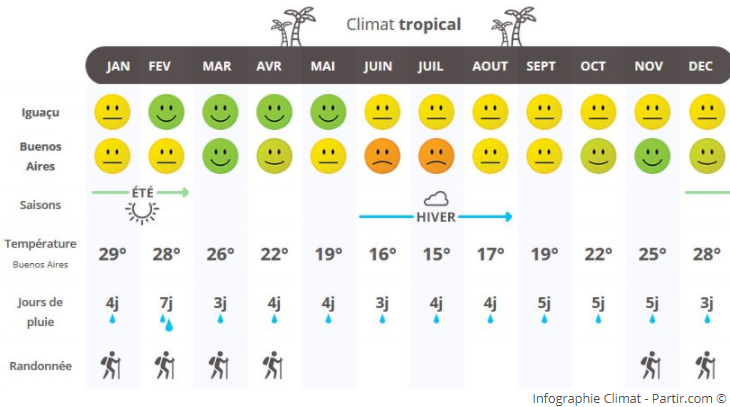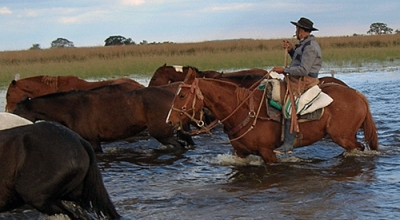HORSE RIDING IN ARGENTINA & CHILE
Argentina is the second largest country in South America. Stretching from a sub-tropical area in the north to the sub-arctic area at the southern tip, the west side of Argentina is separated from Chile by the magnificent Andean Cordillera: the variety of landscapes in Argentina is perfect for horse riding holidays ! There is more to Argentina than polo and tango: vast plains and deserts, sparkling lakes, thundering glaciers and the largest waterfalls on earth, make Argentina a destination with immense potential for horseback riding.
DISCOVER OUR EQUESTRIAN HOLIDAYS IN ARGENTINA & OUR HORSE RIDING TRIP ACROSS THE ANDES FROM CHILE TO ARGENTINA :
ARGENTINA ON HORSEBACK
Argentina has a strong tradition related to the horse. Horseback riding has played an important role in the history and folklore of Argentina. The gaucho is one of Argentina's best-known cultural symbols. The first gauchos were “half-breeds”, of Spanish and Native American origins. The gaucho riders of the pampas are still very present. It is said that " when a gaucho is without a horse, he is without legs ".
The diversity of the land ranges from the remote wilderness areas of southern Patagonia to the bustling metropolis of Buenos Aires in the north. To the south are the rolling and fertile pampas, rich in agriculture and grazing for horses, sheep and cattle, which are home to the bulk of the population. Moving south you reach the Patagonia, a region of cool and arid steppes with woods and fertile areas. The pampa of Argentina is perfect for horseback riding and is home to wildlife that you can discover on horseback. Most of the estancias still continue their activity today, and the gauchos ride with the herds of cattle and polo horses.
The Criollo horse from Argentina, is the result of the selective breeding of wild horses from the pampas, and was bred by the gauchos. This robust horse is today a great source of pride in Argentina. The Criollo is primarily a cattle working horse, it is also used for leisure as it is easy to handle, agile and quite fast. The best polo horses come from crossbreeds of thoroughbred Criollo. Polo in Argentina is not only a sport for the rich, it is as popular as golf and tennis in Europe. In addition to your horseback riding tour in Argentina, you will have the opportunity to take polo lessons, work on horseback with cattle, or just enjoy this wonderful and varied countryside on horseback.
DISCOVER OUR EQUESTRIAN HOLIDAYS IN ARGENTINA & OUR HORSE RIDING TRIP IN THE ANDES FROM CHILE TO ARGENTINA :
WHEN TO GO ON HORSEBACK TO ARGENTINA
In Argentina, located in the southern hemisphere, the seasons are reversed from Europa. The climates are very varied in this vast country with varied altitudes: in January, the hottest month, the temperature in Buenos Aires often exceeds 30 ° C, while in Tierra del Fuego, the thermometer is close to 15 ° C.
Northern Argentina has a hot and humid tropical climate. There are two seasons, the dry season from May to September, and the rainy season from November to March. Rains can be heavy, but usually short. In this part of the country, your horseback riding or riding holiday is preferable during the dry period, as the temperatures are mild during the day and the rains infrequent.
To discover Buenos Aires and its area, the best period is spring, from September to December or in March and April. You should avoid the very hot summer, and the often wet winter.
The Pampa has a temperate climate with hot and humid summers, rather mild winters with little humidity.
Due to the diversity of climates, it is not always easy to define the ideal period for your horse riding trip in Argentina. However, we recommend the months of October to November and March to April, to avoid the heatwave in the north of the country and the cold in the south.

ENTRY FORMALITIES IN ARGENTINA
Citizens of the US, Canada, the UK, Ireland, Australia, New Zealand and most European countries do not currently need a visa for tourist trips to Argentina of up to ninety days. All visitors need a valid passport and, at international airports, have their thumbprint and photo digitally recorded on arrival; passports are stamped on arrival wherever you enter. In theory, this could be for thirty or sixty days, but in practice it’s almost always ninety. If you are travelling alone with a child you must obtain a notarized document before travel certifying both parents’ permission for the child to travel (check with the embassy). Citizens of Australia, Canada and the US must pay a reciprocity fee (because Argentines are charged a fee or must obtain a visa to visit their countries) of US$100, 70 or 160 respectively if they are entering Argentina at either of the Buenos Aires airports (you do not need to pay if you enter at a land crossing or any other airport, including on an international flight). In the case of US travellers the payment is valid for ten years, but only one entry for the others. Anyone needing to pay must do so online in advance at https://virtual.provinciapagos.com.ar/ArgentineTaxes. The rules do change frequently, so it’s best to check the government website for the latest (wargentina.gob.ar). On entering the country, you will also be given a customs declaration form to fill in and all luggage is scanned on arrival at international airports.
When leaving the country, you must obtain an exit stamp. At certain border controls, particularly in the north of the country, it is often up to you to ensure that the bus driver stops and waits while you get this – otherwise drivers may not stop, assuming that all passengers are Argentine nationals and don’t need stamps. In some places (for example, Clorinda) your Argentine exit stamp is actually given on the far side of the border, but check this with the driver beforehand.
See all information: www.roughguides.com/argentina/travel-advice/#entry-requirements
VACCINES & HEALTH:
No compulsory vaccine is required, regardless of the source. However, it is recommended to be up to date with your usual vaccinations: diphtheria, tetanus (especially for equestrian activities), polio, hepatitis B. And as in Argentina there are still areas of poor hygiene, it is strongly recommended to be vaccinated against 2 still common diseases: hepatitis A, typhoid fever. In the event of prolonged rural stays, preventive vaccination against rabies is also strongly recommended.
See all information: www.roughguides.com/argentina/travel-advice/#entry-requirements




